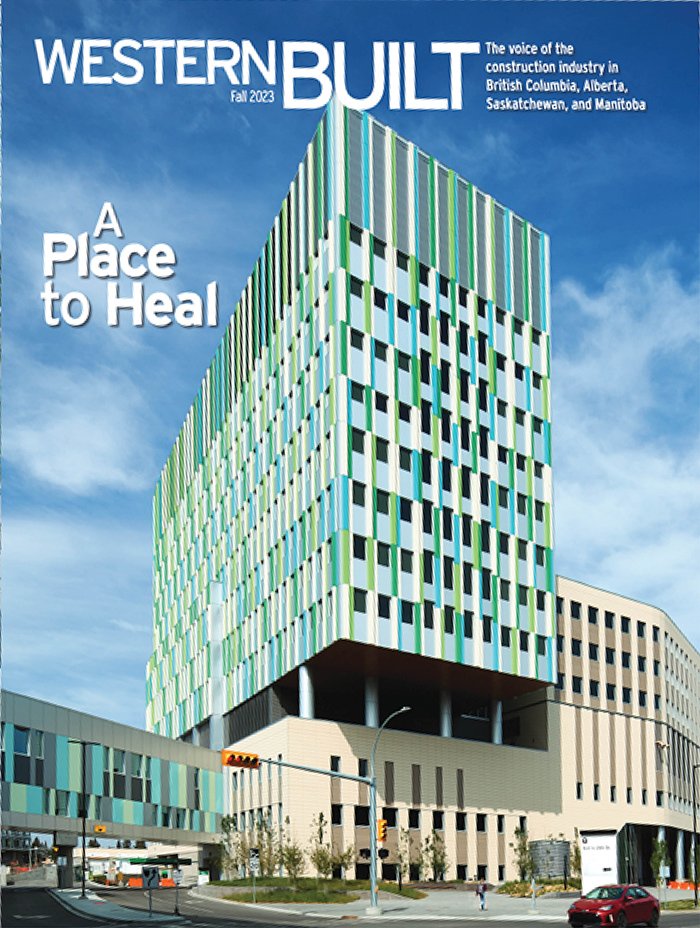- Culture
- Notre équipe
- Services
- Projets
- Médias
- Nos bureaux
- Rechercher

ECA Breaking Ground | Winter 2023
Project Profile | Covenant Wellness Community
Healthcare and community aren’t often considered interdependent. The term “health care” often evokes images of physicians’ offices, hospitals, ambulances, and waiting rooms. But in the heart of Mill Woods, blocks from the Grey Nuns Community Hospital, Covenant Health and Rohit are working to bring the two concepts together and reimagine the future of health care in Alberta.

Reimagine Magazine | Issue 8
Project Profile
The Reimagine Architects team is never one to shy away from a challenge, so when the opportunity came up to design a new student building on Northern Lakes College’s High Prairie campus in 2018, principal Vedran Škopac and his project partners jumped at it.

Reimagine Magazine | Issue 8
Project Profile
Post-secondary campus life is a cherished experience for students. Many travel across the province or country to attend their institution of choice; some even come from abroad. All of them need a place to live. It is hoped that these students will leave their alma mater with an address book full of connections, lifelong friends and formative adventures.

Canadian Property Management | December 2023
Cait Mancuso, BESc, MESc, P.Eng. | Project Engineer
4 tips for achieving success through design-assist.
As buildings become taller and more complicated, the engagement of trades in the design-assist process is more integral than ever. The design-assist project delivery method allows the construction partners and the design team to collaborate early and often throughout the project duration, bringing more cohesion and cooperation to a process that might otherwise operate in silos.

Reimagine Magazine | Issue 8
Project Profile
For youth who’ve given up on schooling and taken to the streets, Edmonton’s Inner City High School offers hope for a future with purpose.
The school meets marginalized youth where they’re at, reeling in 300 a year with music, sports, art, food and wrap-around support – and enticing many to delve deeper into learning. Most who come are Indigenous and many have no real home, or have bounced from home to home, school to school. “They see this school as the last chance to change their lives,” says Joe Cloutier, cofounder and member of the administration team.

Canadian Property Management | December 2023
Mohammad Fakoor, PhD, P.Eng., CEA, CPHD, CEM, LEED® AP BD+C | Associate
“The most sustainable building is the one you don’t build”
As Canada’s 2050 net zero targets loom on the not-so-distant horizon, finding ways to decarbonize existing multi-unit residential buildings (MURBs) in the most cost-effective way, with minimal disturbance to occupants, is an urgent undertaking for the sector.

Canadian Property Management | November 2023
Bernardo Garcia Ramirez, BSc, MSc, P.Eng. | Design Engineer
5 tips for managing the unexpected
Redevelopment projects are defined as any new construction project on a site that has pre-existing structures and uses. These projects can be large or small, ranging from a single building to entire neighbourhoods, and they often involve the demolition of some, if not all, the existing structures. Bernardo Garcia Ramirez, Design Engineer out of RJC Engineer’s Edmonton Office, has worked on many redevelopment projects—all of which have presented his team with some new and unique challenges. In fact, his current project in Edmonton has been anything but straightforward, with surprises ranging from curious to downright costly.

Western Built Magazine | November 2023
The BC Energy Step Code represents a critical shift in the way we approach construction, setting a roadmap for building practices where energy efficiency becomes the top priority. The recent refresh of the BC Energy Step Code (BCESC) and the introduction of the Zero Carbon Step Code are more than just updates to the existing building code. They are part of an overarching strategy to shape a future where all new buildings are zero carbon by 2030.

Journal of Commerce by ConstructConnect | November 8, 2023
Leon Plett, P.Eng., MIStructE, Struct.Eng., LEED® AP | Managing Principal
Anticipated changes to the B.C. Building Code (BCBC) are expected to affect the seismic design of new and retrofitted structures and likely escalate costs for developers, particularly for projects on Vancouver Island, warns Leon Plett, a structural engineer and managing principal at RJC Engineers in Victoria.
“When the design for seismic loads increase, that means the strength of the building has to increase to accommodate those greater loads,” he explains. “So, in a concrete tower where you might have a reinforced concrete core sitting on caissons or a large footing, those core walls, for instance, will go from a metre thick under the current code to something like 1.5 metres in the future code.

techcouver | Nov 1, 2023
Wendy C. Macdonald, P.Eng., ENV SP, LEED® AP BD+C | Sustainability Consultant
In the face of the pressing need to combat climate change and reduce carbon emissions, the adoption of sustainable building practices has become paramount within the construction industry.
Engineers assume a pivotal role in spearheading this movement towards a greener future. An integral aspect of implementing these practices lies in embracing technological advancements.